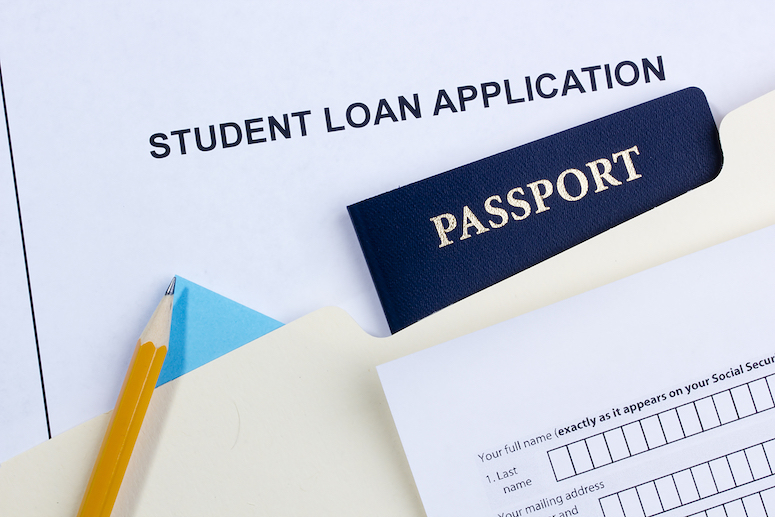Beyond borders: A step-by-step guide on how to study in the U.S.
Do you want to advance your education by going to the United States to study?
The United States tops the World University Rankings 2024, according to the most recent worldwide rating published by Times Higher Education, with 19 American universities placing in the Top 30 of the list.
In addition to the broadness, diversity, and uniqueness of American higher education, U.S. universities also provide top-notch facilities for research and experimentation across every discipline, so it's no surprise that many foreign students from around the world choose to pursue higher education in the land of the free. According to the Student and Exchange Visitor Program (SEVIS), there are 1.08 million international students in the US with valid study visas as of January 2023.
In the recently concluded seventh annual EducationUSA Philippines University Fair 2023 in Manila, Deputy Chief of Mission Y. Robert Ewing said that there is an enduring interest among Filipinos to pursue education opportunities in the United States as the EducationUSA Philippines University fair last year was the largest gathering of its kind in Southeast Asia.
So, if you want to take the leap of faith and study in the U.S., here are the five steps to make that dream a reality.
1. Search your options

Knowing where you want to live in the United States, the curriculum you want to study, and the schools or universities to which you can apply are all crucial given that there are thousands of accredited colleges and universities there.
Additionally, since each university has different semestral openings and admissions, it is imperative to conduct research 12 to 18 months before the academic year.
Here are a few of the colleges and universities you can choose from to narrow down your options:
- Arizona State University. Best known for producing Nobel laureates, Pulitzer Prize winners, and Fulbright scholars, the Arizona State University (ASU) offers over 350 bachelor's degrees and over 200 master's degrees in its four campuses in the Phoenix Area. Business, engineering, and computer science are its most popular fields. ASU provides undergraduate students with partial scholarships worth up to 40% of their tuition. To apply and submit the required documents (official transcripts, SAT or CAT scores, a copy of your passport, and more), go to asu.edu/Kaplan/asu-application .
- California State University, San Bernardino. The university enrolls over 20,000 students yearly, with more than 500 of them from outside Southern California, where the California State University (CSU) is based. More than 70 baccalaureate, master's, and doctoral degree programs are available here. To apply, go to calstate.edu/applyand fill out the online application. For more information about the available scholarships, requirements,deadlines, and tuition fees, go to csusb.edu/international-education/international-admissions.
- Ferris State University. This public university offers scholarships for both bachelor's and master's degrees and offers internship opportunities for international students. Cybersecurity, digital animation, artificial intelligence, and data science are among its top career fields. To apply, fill out its online application form and e-mail your admissions materials to international@ferris.edu. You also need to submit your high school transcripts, financial statement, and a copy of your passport, in addition to reporting your English proficiency scores (TOEFL, IELTS 5.5, or Duolingo 90). For more information on the prerequisites and application procedure, visit ferris.edu/international/index.htm.
- University of Colorado Boulder. Students at the University of Colorado Boulder are provided with opportunities for undergraduate research, internships, and the chance to work with some of the best faculty in the entire world, including Nobel prize winners, National Medal of Science winners, and Macarthur fellows. CU Boulder is one of the best public universities in the United States and is a tier 1 research university that receives over 700 million dollars for research every year. Engineering, fine arts, and sciences are CU's strongest fields. Undergraduate international students at CU are automatically considered for scholarships, and graduate students are eligible for fellowship and assistantship programs. For all the details on how to apply, go to edu/admissions/international.
- University of San Francisco: About 50 undergraduate majors are available at the University of San Francisco, and students are free to switch between them whenever they wish. Interested applicants must submit their applications by January 15 for the fall intake and November 1 for the spring intake at USF. Depending on the applicants' grades, USF awards scholarships to all candidates ranging from $16,000 to $29,000 per year for four years. They also provide doctoral, graduate, and master's degrees. Visit usfca.edu/admission/undergraduate/international to learn more about the application process.
- YALE University New Haven Connecticut. Yale College offers financial aid for undergraduate degree programs as well as Yale University's graduate school, which offers in-depth subject knowledge and real-world professional experience, especially for research programs. You can get in touch with the college via admissions.yale.edu/international-student-questions for undergraduate admissions. For graduate programs, the application process includes submitting a resume, transcripts, and letters of recommendation, among others. Visit the edu application portal if you wish to apply.
Other American higher education institutions that admit foreign students are as follows:
- Carnegie Mellon University
- Cascadia College
- Clark College
- College of Central Florida
- College of Southern Nevada
- Drexel University
- Foothill + De Anza Colleges
- Green River Community College
- Kent State University
- Lewis University
- Merrimack College
- Moraine Valley Community College
- Northeastern University
- Nova Southeastern University
- Riverside City College
- Saint Cloud State University
- Savannah College of Art and Design
- SUNY College at Plattsburgh
- The University of Texas and Dallas
- The University of Texas and Dallas- Troy University
- University of Central Missouri
- University of Utah Asia Campus
- Valencia College
- Washington State University
- Xavier University
- York College of Pennsylvania
2. Find ways to finance your education

Getting funding is one of the most important parts of your journey to study abroad. According to studies-overseas.com, annual tuition fees both in public and private universities can cost you millions of pesos, depending on the type of university and degree you're planning to take. Here's an estimate of the tuition fees as of 2023:
Public or state universities
- Bachelor's degree: $8,000 (P454,000) to $35,000 (P2 million) per year
- Master's degree: $10,000 to $35,000 (P2 million) per year
Private universities:
- Bachelor's degree: $25,000 to $50,000 per year
- Master's degree: $22,000 to $55,000 per year
Apart from the tuition fee, considering the country's cost of living is also a must in your planning. The average cost in the U.S. is around $1,500 (P85,000) per month or $10,000 (P568,000) annually. The amount should cover your accommodation, meals, transportation, books, clothing, and leisure activities.
If financing your studies and everyday expenses would be challenging for you, one way to get around it is by looking for scholarships and other forms of financial assistance that could lower your tuition fees and even provide you with allowance.
The Fulbright Philippines is a prime example of a program that supports foreign students. The organization, which is managed by the Philippine-American Educational Foundation, provides exchange scholarship programs to Filipinos wanting to study in the U.S. Visit fulbright.org.ph to learn more about their available scholarship opportunities.
3. Complete your application

Once you've listed all the necessary details for your study in the U.S., proceed to take your plans off the ground by completing your application to your preferred university, scholarship program, or both.
The application process varies depending on the university. Some of them consist of prerequisites such as recommendation letters, essays, and several kinds of standard exams pertinent to your selected program, like verbal reasoning, analytical writing, and English Proficiency exam scores.
If you wish to take the language proficiency test, you should check out English Language Proficiency Testing organizations like IELTS and Pearson through their websites ieltsasia.org/ph and pearsonpte.com to learn more about the testing procedure, dates, and locations.
4. Apply for a student visa
If you are accepted into a university, the institution will provide you with an I-20 form, which you'll need to pay the SEVIS fee of $350 (P20,000). This is on top of the processing fee of your student visa, which is $160 (P9,000).
Keep in mind that you cannot apply for a student visa until you've received an acceptance, filled out an I-20, and paid SEVIS. In addition to this, individuals applying for student visas must schedule an interview with the U.S. Embassy in the Philippines to have their visas approved.
To get the full details of the application procedure for a student or exchange visitor visa, e-mail support-philippines@ustraveldocs.com or visit ustraveldocs.com/ph and check the website's Visa Information & Appointment Service.
5. Prepare for departure

You are now one step closer to achieving your dream of studying in the U.S. after finishing the previous steps but first, you must understand what to anticipate when you get there.
Verify that all of your travel documentation is in order and that your travel arrangements are appropriately organized. Additionally, you may connect with an EducationUSA advisor and get a free pre-departure orientation.
Along with the free pre-departure orientation, EducationUSA advisers also provide no-charge guidance, assistance, and information as you look for colleges and universities in the US that interest you. Visit them on their website, EducationUSA.State.Gov and at EducationUSA.Philippines on Facebook and Instagram.


